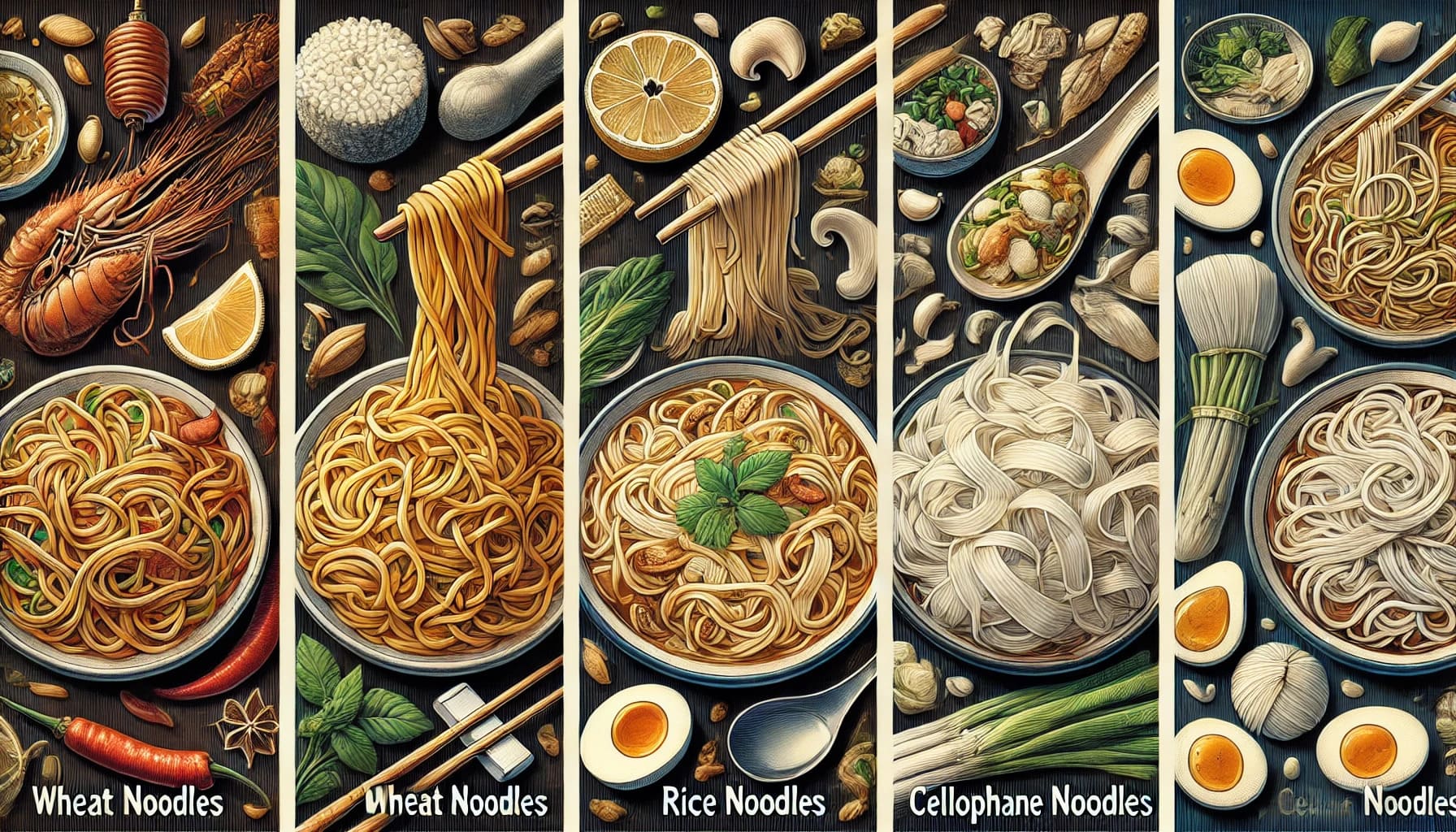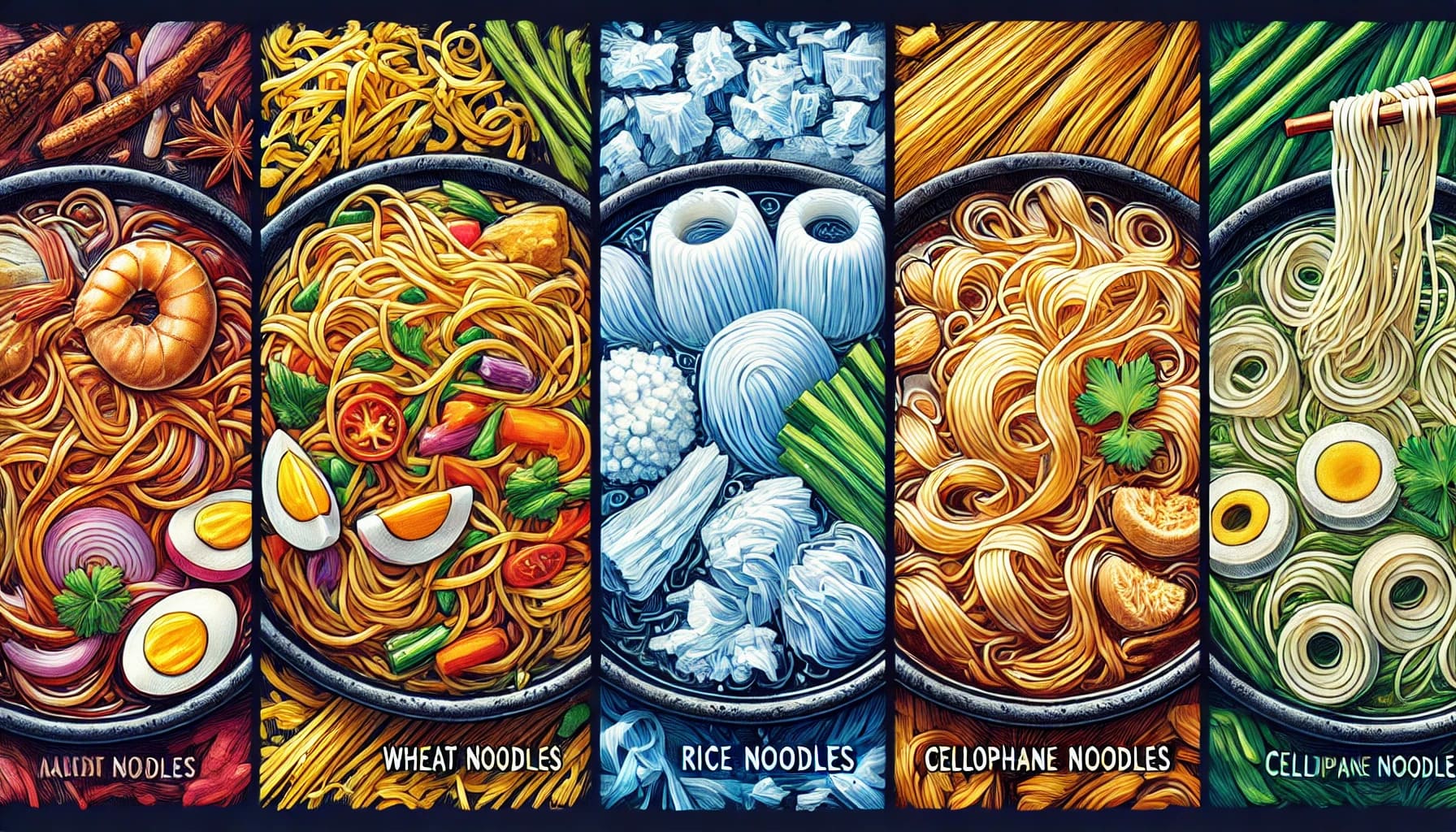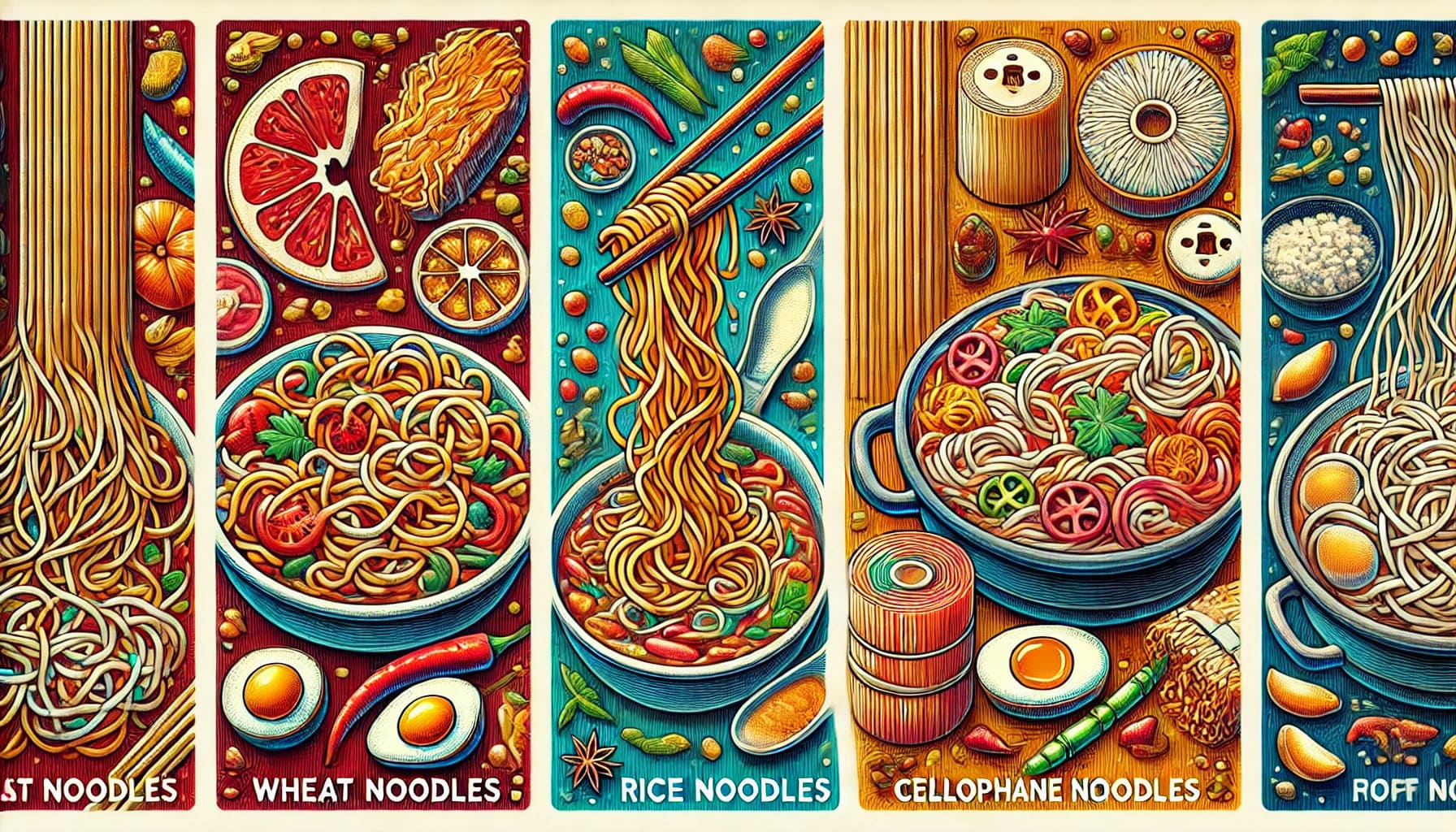
Discover the 3 Types of Chinese Noodles: A Complete Guide
What are 3 Types of Chinese Noodles?
Chinese cuisine is renowned for its diverse and flavorful dishes, and noodles play a significant role in this culinary tradition. If you're a fan of Chinese noodle dishes, understanding the different types can enhance your appreciation and cooking skills. In this article, we will explore the three main types of Chinese noodles, their unique features, and how they are typically used in various dishes.
Before we dive into the different types of Chinese noodles, let's introduce The Magic Noodle in Las Vegas. This renowned restaurant offers a delightful culinary experience, showcasing the art of noodle making. With its authentic flavors and welcoming ambiance, The Magic Noodle has become a favorite spot for both locals and tourists.
1. Wheat Noodles (Miàn)

Wheat noodles, known as miàn in Chinese, are one of the most popular and versatile types of noodles. They are made from wheat flour, water, and sometimes eggs. The dough is rolled out and cut into various shapes and thicknesses, resulting in a wide range of noodle types. Here are a few well-known varieties:
Types of Wheat Noodles
- Lo Mein: These are soft, slightly chewy noodles often used in stir-fried dishes. The term lo mein means "tossed noodles," referring to the way they are cooked.
- Chow Mein: Unlike lo mein, chow mein noodles are either stir-fried until crispy or steamed and then fried. This gives them a distinctive texture that works well with vegetables and meats.
- Dan Dan Noodles: Originating from Sichuan province, these noodles are served in a spicy, flavorful sauce made from chili oil, Sichuan peppercorns, minced pork, and preserved vegetables.
Cooking Tips
- Boiling: Most wheat noodles require boiling before they are added to soups or stir-fries. It's essential to follow the package instructions to avoid overcooking.
- Stir-Frying: When stir-frying, ensure your noodles are fully cooked before adding them to the wok. This helps them absorb the flavors of the sauce and other ingredients.
2. Rice Noodles (Mǐfěn)
Rice noodles, or mǐfěn, are another staple in Chinese cuisine. Made from rice flour and water, these noodles are gluten-free and have a delicate texture. They are commonly used in soups, stir-fries, and salads.
Types of Rice Noodles
- Vermicelli: Thin and light, rice vermicelli noodles are often used in dishes like Pho and Bun Thit Nuong. They cook quickly and are perfect for light, refreshing meals.
- Ho Fun: Also known as Shahe fen, these are wide, flat noodles commonly found in Cantonese cuisine. They are ideal for stir-frying with beef or seafood.
- Cheong Fun: These are steamed rice noodle rolls often served as dim sum. They can be filled with shrimp, pork, or vegetables and are typically enjoyed with a sweet soy sauce.
Cooking Tips
- Soaking: Most rice noodles need to be soaked in hot water before cooking. This softens them and reduces cooking time.
- Stir-Frying: When stir-frying rice noodles, handle them gently to prevent breaking. Add them towards the end of cooking to mix them with the sauce evenly.
3. Cellophane Noodles (Fěnsī)

Cellophane noodles, also known as glass noodles or fěnsī, are made from mung bean starch or sweet potato starch. These noodles are transparent when cooked and have a chewy, gelatinous texture. They are a popular choice for hot pots, soups, and salads.
Types of Cellophane Noodles
- Tang Hoon: These are thin glass noodles commonly used in Thai and Chinese cuisine. They absorb flavors well and are perfect for soups and stir-fries.
- Dangmyeon: Known as Korean glass noodles, these are made from sweet potato starch. They are thicker and chewier, often used in dishes like Japchae.
Cooking Tips
- Boiling: Cellophane noodles usually require a quick boil before being added to dishes. Be careful not to overcook them, as they can become too soft.
- Hot Pot: When used in hot pots, add the noodles towards the end of cooking. They quickly soak up the broth's flavors, adding a delightful texture to the dish.
Exploring Chinese Noodle Dishes

Chinese noodles are incredibly versatile and can be used in a variety of dishes, from soups and stir-fries to cold salads and hot pots. Here are a few classic Chinese noodle dishes to inspire your culinary adventures:
1. Lanzhou Beef Noodle Soup
Lanzhou beef noodle soup is a famous dish from the Gansu province. It features hand-pulled wheat noodles served in a rich, clear beef broth, topped with tender slices of beef, radishes, cilantro, and chili oil. The noodles are known for their springy texture and are a highlight of this comforting soup.
2. Singapore Rice Noodles
Despite its name, this dish is a staple in Chinese cuisine. Singapore rice noodles are stir-fried with shrimp, pork, vegetables, and curry powder, giving them a distinctive yellow color and aromatic flavor. The thin rice vermicelli noodles are perfect for absorbing the bold spices and sauces.
3. Sichuan Hot Pot
Sichuan hot pot is a communal dining experience where diners cook a variety of ingredients, including cellophane noodles, in a spicy, flavorful broth. The glass noodles absorb the broth's intense flavors, making them a delicious addition to the hot pot.
Conclusion
Understanding the different types of Chinese noodles can significantly enhance your culinary adventures. Whether you prefer the hearty wheat noodles, the light and delicate rice noodles, or the chewy cellophane noodles, each type offers unique flavors and textures that can elevate any dish. Experiment with these noodles in your cooking to discover the rich and diverse world of Chinese cuisine.

